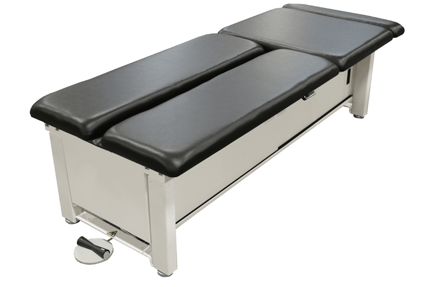The knee joint is unique in any number of aspects
Not only is it the largest joint structure in the human body, but it is also the most complex and the only one that must bear loads that can be up to four times the body’s actual weight.1 Of course, the time when your patients will become the most aware of just how vital the knee is for proper mobility and stability will be when they have suffered a knee injury or have chronic, debilitating knee pain.

Unfortunately, your patient with knee pain is not alone in discovering just how much of their day to day activities are curtailed without both of their knees working at full capacity. In fact, a survey from the Centers for Disease Control & Prevention found that knee pain was the most commonly reported site other than the back for painful, sore, or stiff joints.2
When National Health Interview Survey respondents were asked if they experienced pain, aches, or stiffness around or in any joint during the past 30 days, except for the back and neck, 30% of adults reported experiencing such symptoms. When they were further asked to pinpoint the affected joint or joints, 18 percent reported that their major complaint was knee pain.2
For a good number of those patients reporting knee pain, conventional medicine would very well dictate invasive surgery, such as a knee replacement or reconstruction of a torn medial meniscus. However, chiropractic care may provide less risky alternatives.
Two case reports appear to show some evidence for the use of adjusting instruments as a conservative treatment for knee pain.3,4
Research results
An article from the September 1994 issue of the Journal of Manipulative and Physiological Therapeutics presented a case of a 54-year-old woman who had been diagnosed with a torn meniscus.3 Three surgeons independently reached the conclusion that surgery was the only viable treatment.

Instead, the patient opted for chiropractic treatment as a more conservative option. She began a course of instrument assisted chiropractic adjustments to the knee, in conjunction with homeopathic treatments.
Over time, she recovered full function of the knee and did not require surgical intervention.3
Another case of a torn meniscus was reported in the December 2010 issue of Chiropractic Medicine.4 In this instance, a physically active 60-year-old woman sustained a meniscus tear to the left knee while on a hike.
The decision was made to use multi-modal therapy with instrument assisted chiropractic adjustments to the knee, along with therapeutic ultrasound, soft-tissue therapy, sports taping, and rehab exercises to strengthen the muscles of the affected leg. After 12 treatments, the patient was able to walk, swim, and ride a bike without any symptoms.4
As the saying goes: You don’t really appreciate what you have until you no longer have it. This is certainly true in the case of knee pain.
Fortunately, chiropractic care can help your patients “find” full function of their knees again without invasive surgery.
References
- Logan C. Knee joint anatomy, common injuries and postrehab strategies. IDEA Fitness Journal.January 2005.
- Centers for Disease Control & Prevention. Percentage of adults reporting joint pain or stiffness, National Health Interview Survey, United States, 2006. MMWR Weekly May 2, 2008, 57(17);467.
- Polkinghorn BS. (1994). Conservative treatment of torn medial meniscus via mechanical force, manually assisted short lever chiropractic adjusting procedures. Journal of Manipulative and Physiologic Therapeutics, 17(7), 474-484.
- Jarosz BS, Ames RA. (2010). Chiropractic management of a medial meniscus tear in a patient with tibiofemoral degeneration: a case report. Journal of Chiropractic Medicine, 9(4), 200-208.
This article was written by Tina Beychok for Chiropractic Economics and was published on August 16, 2017. The original article can be found here.
References
- Logan C. Knee joint anatomy, common injuries and postrehab strategies. IDEA Fitness Journal.January 2005.
- Centers for Disease Control & Prevention. Percentage of adults reporting joint pain or stiffness, National Health Interview Survey, United States, 2006. MMWR Weekly May 2, 2008, 57(17);467.
- Polkinghorn BS. (1994). Conservative treatment of torn medial meniscus via mechanical force, manually assisted short lever chiropractic adjusting procedures. Journal of Manipulative and Physiologic Therapeutics, 17(7), 474-484.
- Jarosz BS, Ames RA. (2010). Chiropractic management of a medial meniscus tear in a patient with tibiofemoral degeneration: a case report. Journal of Chiropractic Medicine, 9(4), 200-208.

